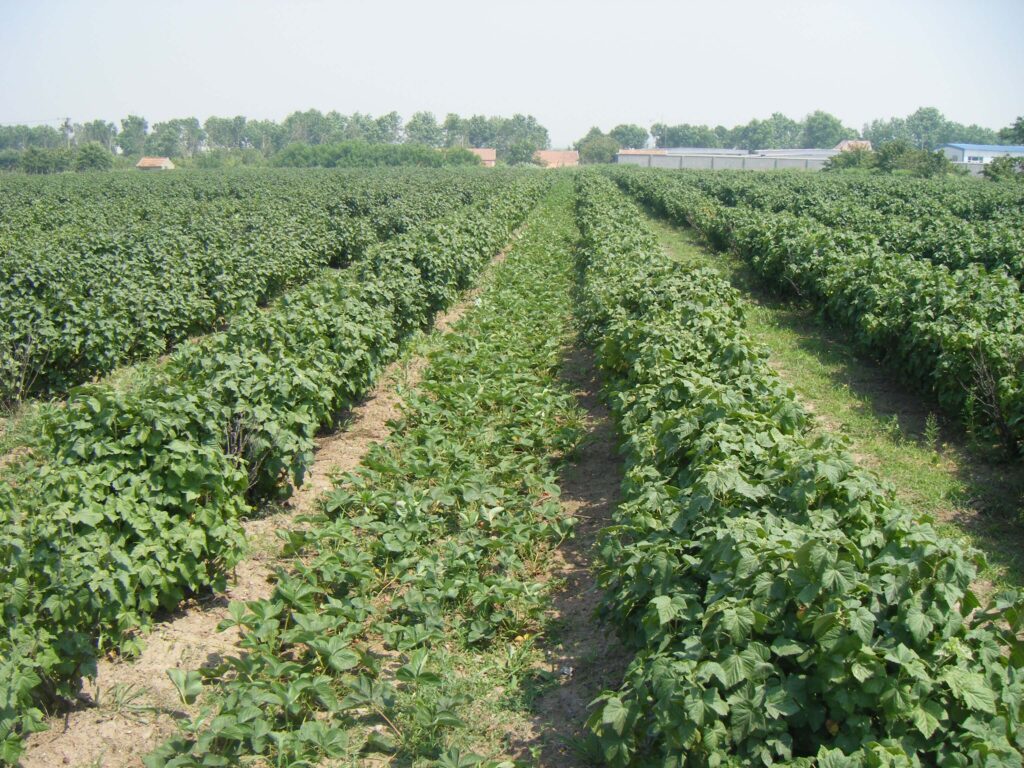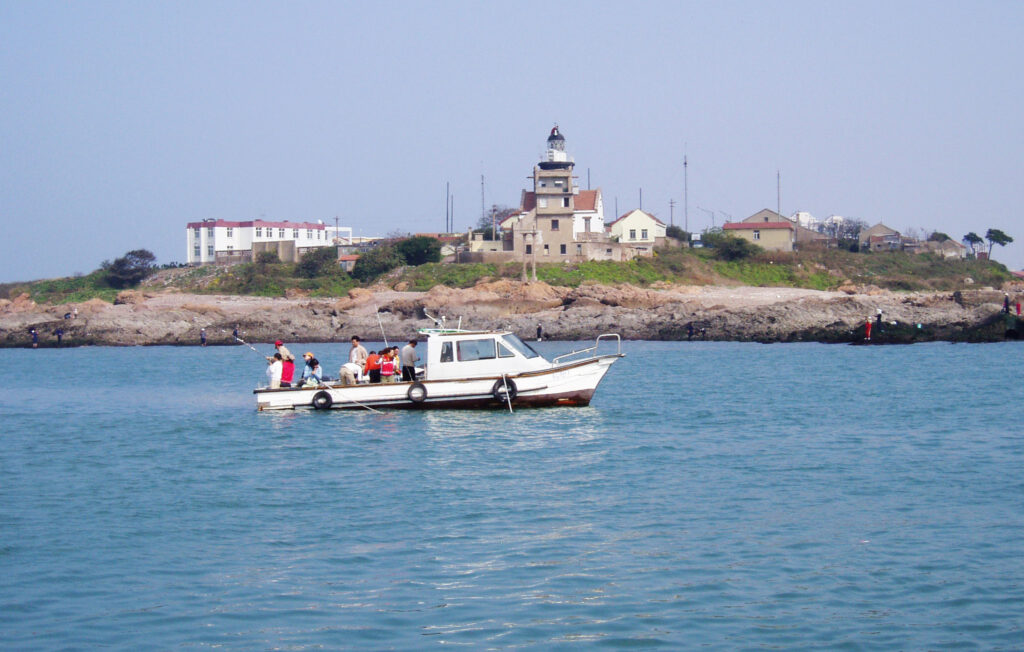
In 2000 we started our joint venture, Dragons Garden Ltd, in China in a very humble manner – with the lease of a 9 acre nursery block on Hong Dao (red island), a peninsula which juts out into the shallow waters of Qingdao Bay. Our aim was to grow strawberries and other berry fruit, so we imported varieties that we felt would be of interest to our prospective industrial customers and which we hoped would be an improvement on the varieties commonly grown in China at that time. It is interesting to reflect on what did and did not work and the lessons we learnt along the way.
We made a fundamentally mistaken assumption about the climate….
In the first place we made a fundamentally mistaken assumption about the climate. Hong Dao is pretty much right on Latitude 36 North. This line of latitude passes through the major strawberry growing areas of southern Spain and California. So our assumption was that the varieties grown in those areas, or rather their early predecessors (we could not obtain the latest varieties which were still under Plant Breeders Rights) would do well on our farm on the Shandong coast. This was a big mistake as we had not factored in the influence of the Siberian High (also called the Siberian Anticyclone). This phenomenon, where cold air gathers around Lake Baikal in Siberia from September until April, is a hugely dominant influence on weather across the north of China and as far west as Italy.
Dry, bitterly cold winters
The wind that blows from Siberia across Shandong in the winter is very cruel. It is too cold to hold moisture so the days are bright and clear but the outside temperature may be below zero and any plant life above ground, unless it is very hardy, just gets desiccated (freeze-dried, even). If you are out of the wind and under plastic such as in a polytunnel the weather is perfect. One of our current farms has some fantastic polytunnels in which we can get a strawberry harvest started inside with beautiful fruit in December. Outside – forget it.
Rethinking the plant stock
Here in the UK at nearly 20 degrees higher in latitude than Hong Dao we have a much longer, but also much milder, winter. So we found that strawberry varieties bred in California and Spain just perished in Shandong and the tougher varieties bred in higher latitudes did better.
There is a bonus to the cold Shandong winters though. The winter chilling hours – necessary for so many plants to experience a proper dormancy and an even bud-break in Spring – were certainly present in Shandong. Some of our hardier imports such as blackcurrants, raspberries and blackberries did well in the beginning but unfortunately other factors such as a hot summer and some new pest burdens meant that these berry fruits did not perform as we had hoped. Gradually we have fallen back to strawberries as our main crop.
Shandong – the market garden of China
The benefit of winter chilling is demonstrated by the colossal volumes of deciduous fruit that China (and particularly Shandong) produces. Take apples for example. In round figures the USA produces about 4.8 million tonnes, Europe produces about 11 million tonnes and China produces a whopping 43 million tonnes. For pears China produces about 14 million tonnes which is nearly 80% of world production. Peach and apricot are also produced in huge volumes.
Another interesting factor that has contributed hugely to the success of Shandong as a fruit and vegetable growing region is the influence over millenia of the Huang Ho or Yellow River. China’s earliest civilizations were born along this river, a sustainer and a destroyer of life . As it passes through the Loess Plateau in central China the Yellow River picks up more sediment than any other river on the planet. This sediment drops out as the course of the river reaches its last stage and the river slows. It is the Yellow River that created the North China plain. As the sediment built up on the river floor levees were constructed to keep the river contained. Regular floods that breached the levees were devastating in scale, and in loss of life. At some points in recorded history the delta of the Yellow River was south of the Shandong peninsula rather than north where it presently is. The end result is a deep warm silt that is excellent for all sorts of crops and which supports the standard crop rotation of winter wheat followed by maize, practiced all across the North China plain. Two main crops per year is very good going indeed.


